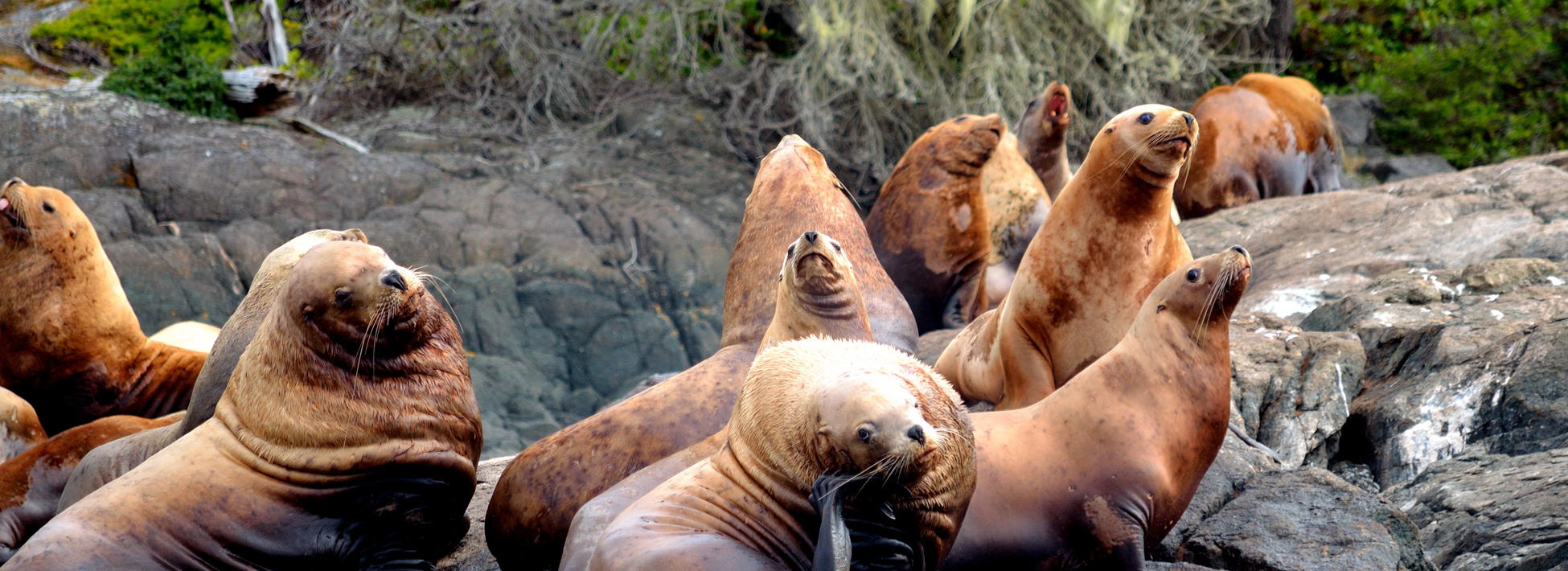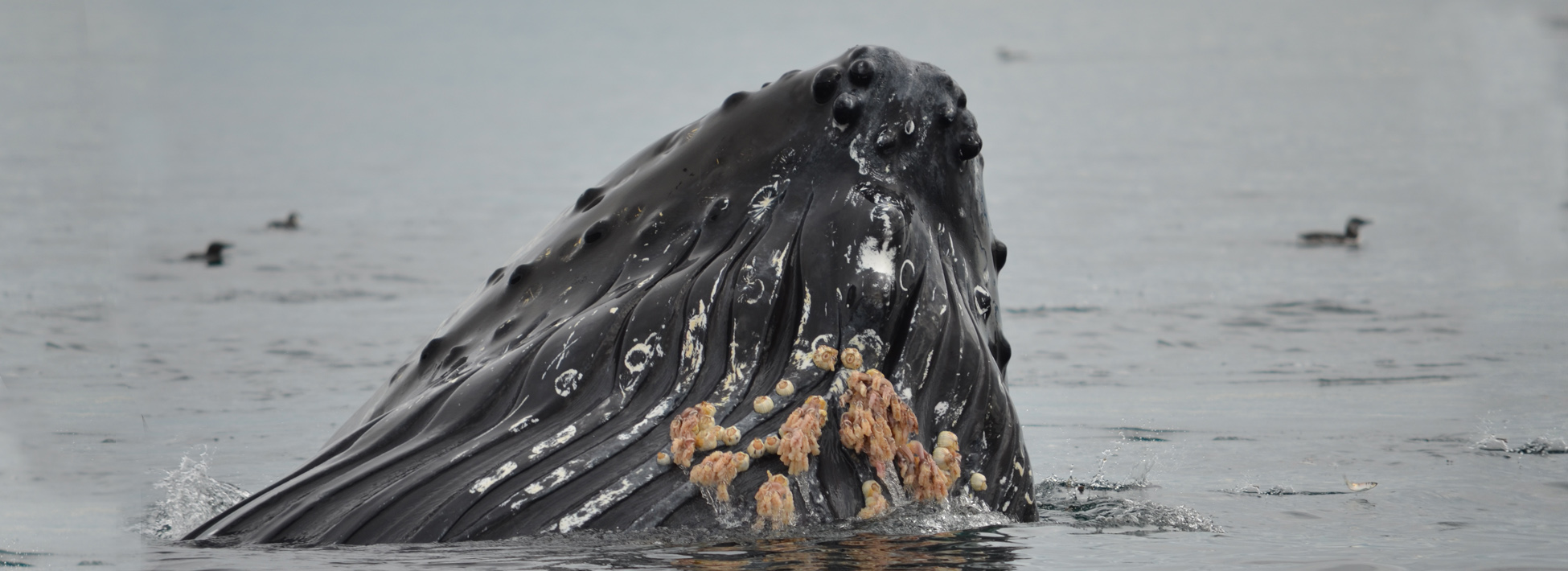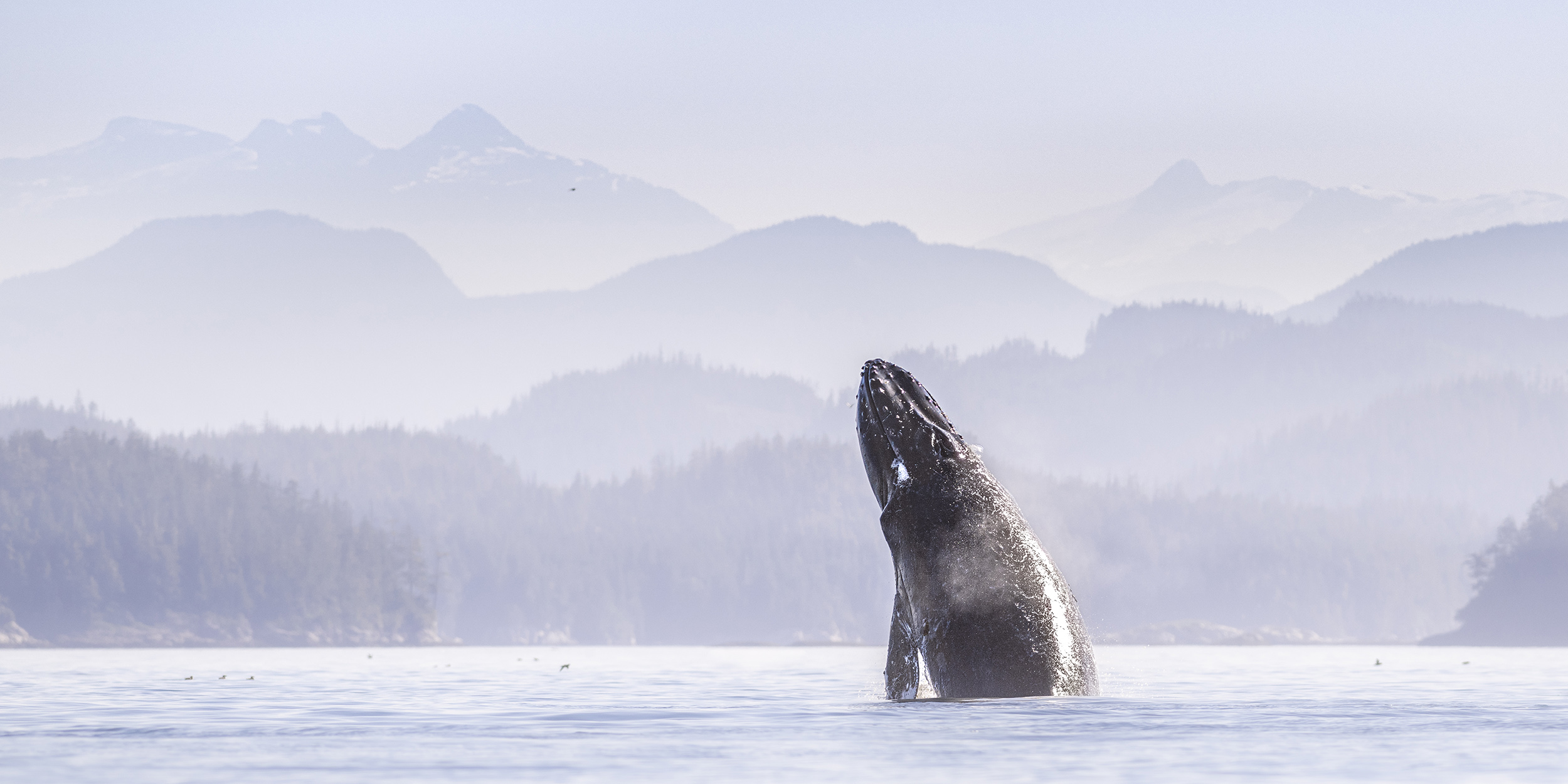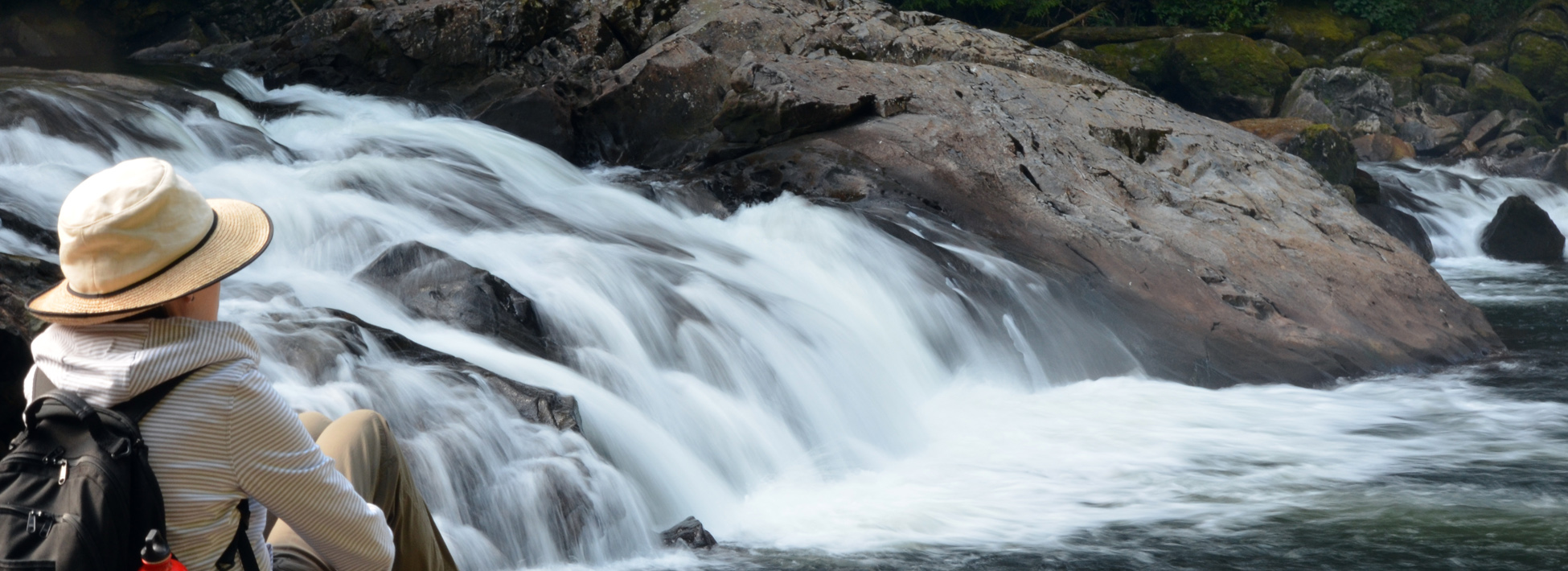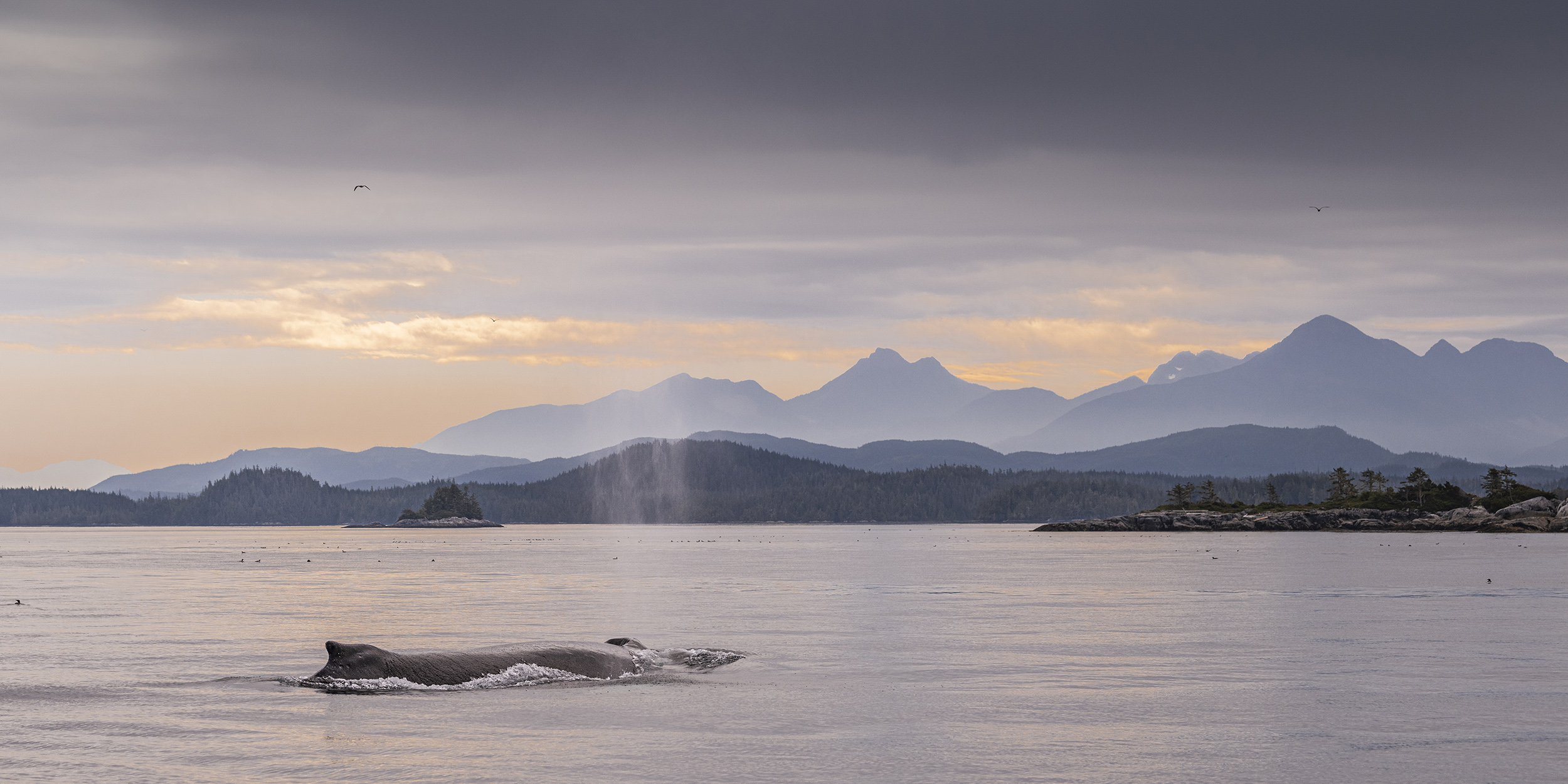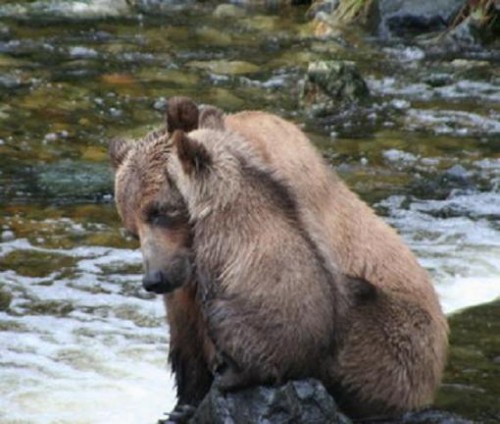
While waiting for salmon to move up river a grizzly bear visits her cub that is sitting on a rock trying to stay dry. First year grizzly cubs are to young for fishing and do not like to get wet unless absolutely necessary. This cub had been sitting for a while and started to make noises when mother came over to make sure all was OK before she returned to work.
